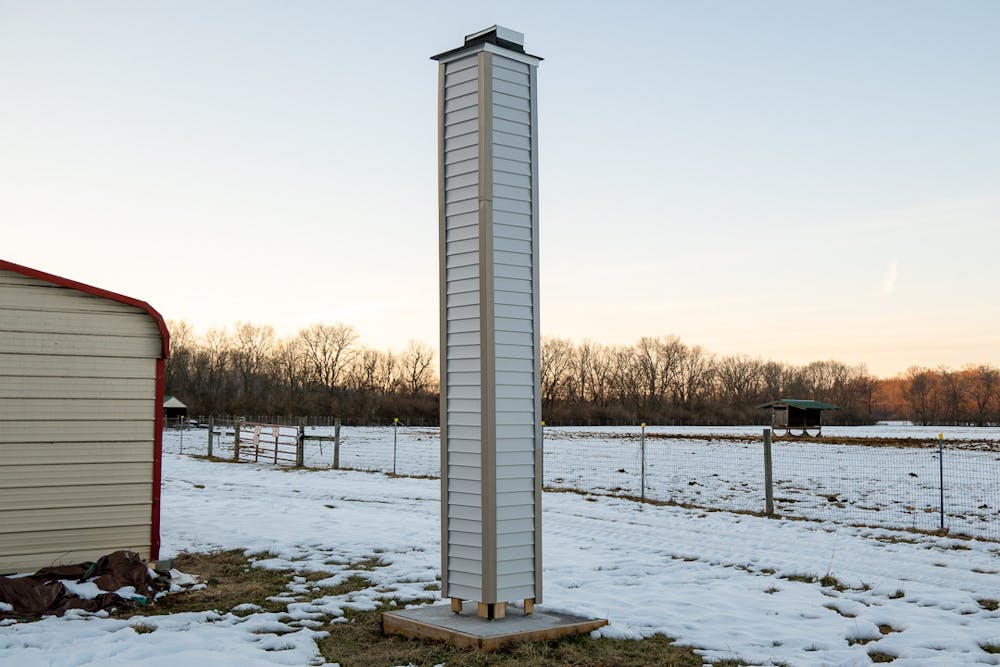When thinking about habitat loss, it’s easy to imagine a clear-cut rainforest, the mass destruction left behind from a wildfire or the drilling of a pristine Alaskan nature reserve.
But we rarely think about the local habitats: The native flora and fauna disrupted by our daily human activities. The bees. A native wildflower, not as pretty as its invasive counterpart. A humble chimney swift.
These “smaller” losses greatly impact the quality of local ecosystems, making habitat creation and preservation incredibly important for several Oxford and Miami-based organizations.
One of those organizations is the Miami University Audubon Society, led by sophomore Michelle Baker. The Audubon Society is involved in many avian-related projects, the latest of which is the construction of a “bird tower” that will house local chimney swifts.
“[Chimney swifts] have these funky hooked feet that make them unable to sit like other perching birds,” Baker said. “They have to hook on to the side of things.”
She added that before humans came to North America, the tiny birds hooked on hollow trees. As people took over the area, they found a more stable habitat in chimneys, giving the birds their iconic name. Now though, as houses board up their flues or simply construct new buildings without chimneys, the swifts have nowhere to go. Baker and her club members hope to fix that.
“We build what is essentially a chimney-shaped structure so the swifts can roost inside, raise their young, and just generally [to] provide shelter while they live here during the summer,” Baker said.
But why should Oxford residents and Miami students care about these tiny birds?
“Aside from just being an adorable little flying cigar-shaped bird, they’re very avid insectivores,” Baker said. “Mosquitoes are one of their favorites, so they fly around and eat all of these insects that carry blood-borne pathogens.”
It’s humans who have interrupted chimney swift habitats not once, but twice, and it’s now up to humans to fix it.
The bird towers were successfully completed near DeWitt Cabin late last fall, long after the chimney swifts migrated south. Baker said she is optimistic that when they return, they’ll find a nice home waiting for them in Miami’sNatural Areas.
The Natural Areas aren’t just home to bird towers, though. They’re also one of the key places where groups like the Wild Ones Miami Valley Chapter focus on restoring native plants. Carla Blackmar, who works with both Wild Ones Miami Valley and the Hefner Museum, points out the hidden value of native species, particularly plants.
Enjoy what you're reading?
Signup for our newsletter
“It’s well known that certain [insects] need certain plants to complete their life cycles. Caterpillars need certain plants, birds need certain caterpillars [...] it goes up the entire food chain,” Blackmar said. “If you want to rebuild ecosystems, you have to start with plants.”
Starting with plants can be as small as swapping out invasive flowers for natives (such as the dashing and bee-friendly Bee Balm) or as complex and large scale as the massive honeysuckle hacks arranged each fall in the Natural Areas.
It can even be as simple as preserving Miami’s old-growth trees, which have come under threat with the proposed stadium construction on the historic Slant Walk.
“Trees are a really important habitat that are hilariously easy to overlook,” Blackmar said. “I’ve talked to students who decided to come [to Miami] because of how beautiful it was, and the trees are part of that. I think it would be a strategic failure on the university’s part [to cut down the Slant Walk trees] because it messes up what makes the school really special from an aesthetic and ecological perspective.”
While the future of many of Miami’s old-growth trees is still unclear there are many ways to appreciate the habitats on campus and the surrounding area. Due to the work of local residents and students alike, come spring students will be able to enjoy a variety of Ohio wildflowers, the gentle bees those flowers attract and watch flocks of chimney swifts descend upon their new homes.




